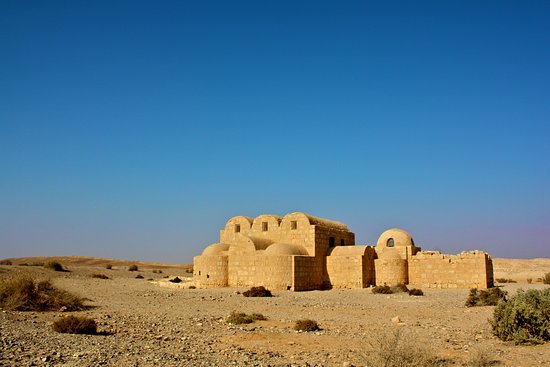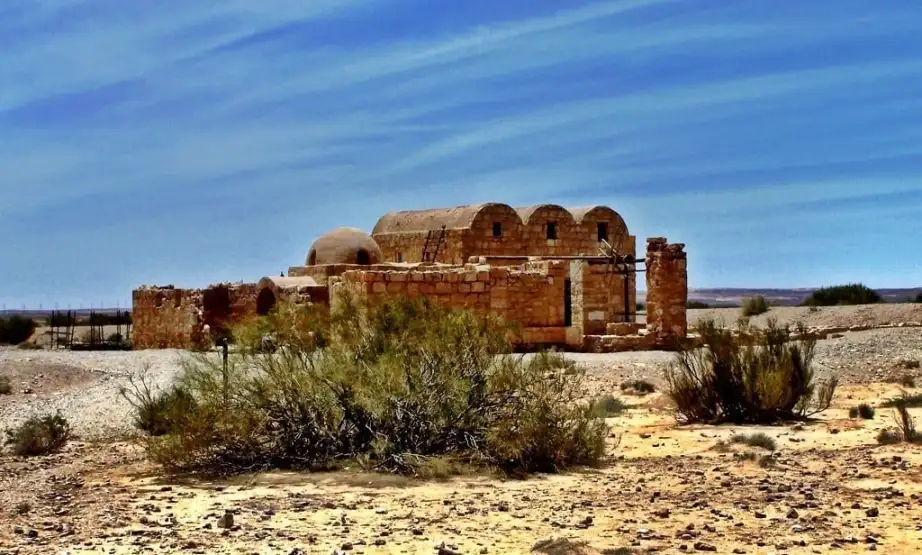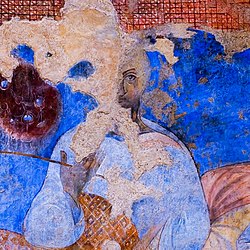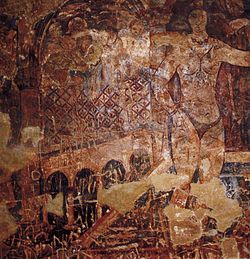qasr amra
Qusayr 'Amra or Quseir Amra, lit. "small qasr of 'Amra", sometimes also named Qasr Amra (قصر عمرة / ALA-LC: Qaṣr ‘Amrah), is the best-known of the desert castles located in present-day eastern Jordan. It was built some time between 723 and 743, by Walid Ibn Yazid, the future Umayyad caliph Walid II,[1] whose dominance of the region was rising at the time. It is considered one of the most important examples of early Islamic art and architecture. The building is actually the remnant of a larger complex that included an actual castle, meant as a royal retreat, without any military function, of which only the foundation remains. What stands today is a small country cabin. It is most notable for the frescoes that remain mainly on the ceilings inside, which depict, among others, a group of rulers, hunting scenes, dancing scenes containing naked women, working craftsmen, the recently discovered "cycle of Jonah", and, above one bath chamber, the first known representation of heaven on a hemispherical surface, where the mirror-image of the constellations is accompanied by the figures of the zodiac. This has led to the designation of Qusayr 'Amra as a UNESCO World Heritage Site. The bathhouse is also, along with examples in the other desert castles of Jordan, one of the oldest surviving remains of a hammam in the historic Muslim world.[7][8][9] That status, and its location along Jordan's major east–west highway, relatively close to Amman, have made it a frequent tourist destination. Location and access: Qusayr 'Amra is located on the north side of Jordan's Highway 40, roughly 85 kilometres (53 mi) from Amman and 21 kilometres (13 mi) southwest of Al-Azraq. It is within a large area fenced off in barbed wire. A paved parking lot is located at the southeast corner, just off the road. A small visitor's center collects admission fees. The castle is located in the west of the enclosed area, below a small rise.




